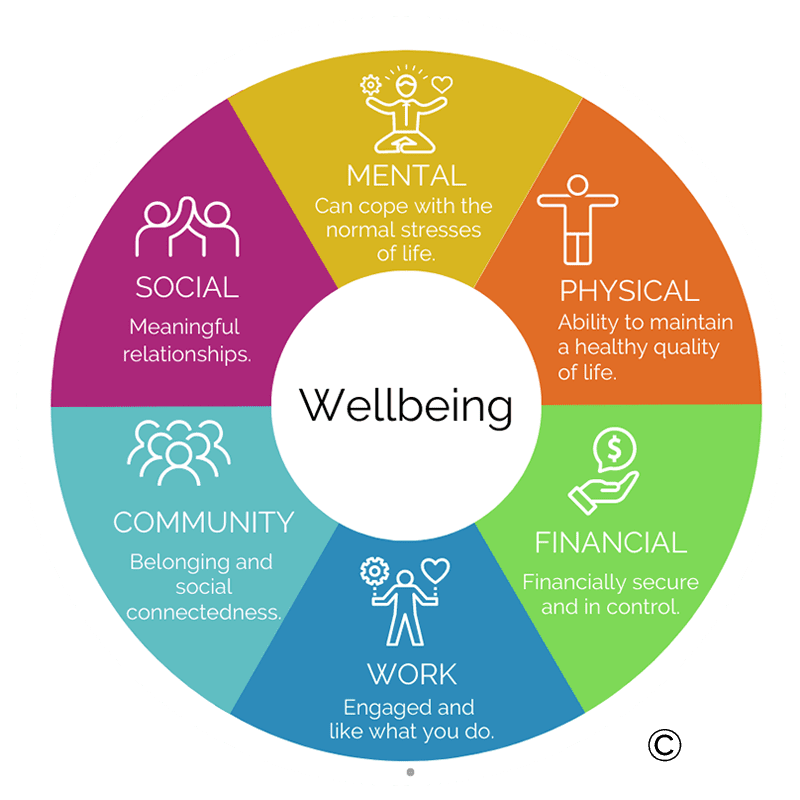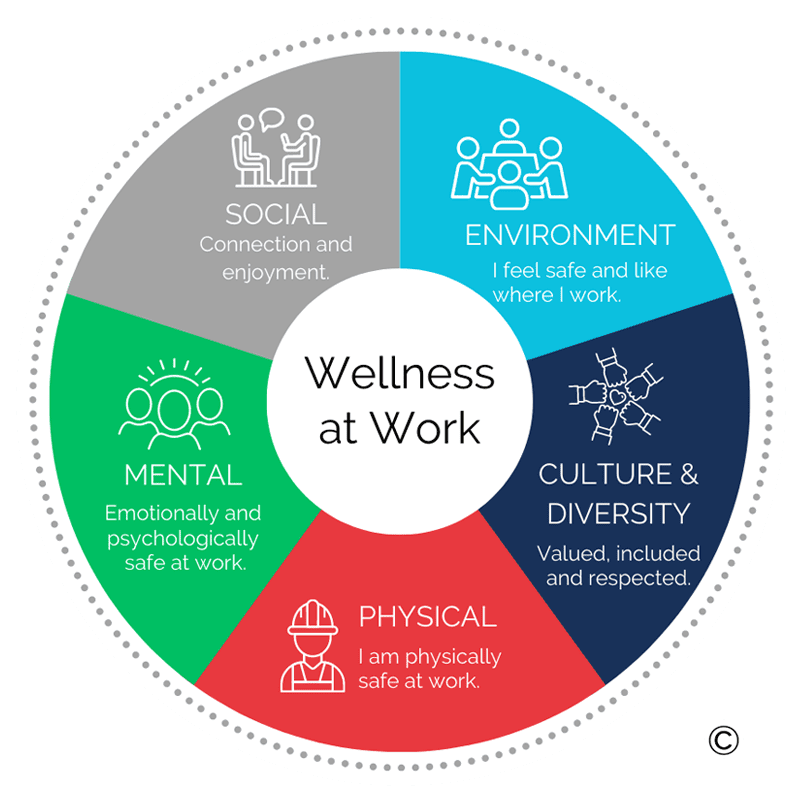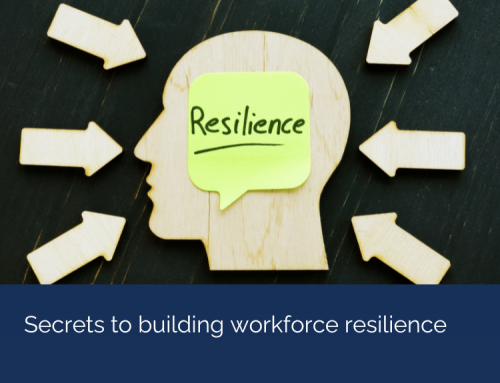As changes to WHS regulations to protect workers from mental health injury are being implemented in some states (and proposed in others), it is important for employers to understand the distinction between what personal wellbeing and wellness at work means, and what individuals and organisations are each responsible for.
Although personal wellbeing and wellness at work are closely linked, you may be surprised to find they can be identified as distinct areas. While personal wellbeing encompasses all aspects of an individual’s life, wellness at work is focused on our experience solely in the workplace. Each area impacts the other.
The unfortunate loop of workplace stressors impacting home can result in a negative spiral, affecting overall wellbeing in both areas, and vice versa.
While an organisation can support individual wellbeing with things such as financial literacy training, community engagement opportunities, mindfulness programs etc, when looking at wellness at work, the aim is to remove or mitigate hazards of psychological harm the same way organisations approach physical harm; implementing a risk management framework.
But before we can manage the risks, we need to understand the distinction between personal wellbeing and wellness at work.

What is wellbeing?
Personal wellbeing is multi-dimensional and encompasses being comfortable, healthy or happy in various aspects of our lives. Our work, financial, physical, community, social and mental health are all interconnected elements that contribute to overall wellbeing.

Aspects of Personal Wellbeing:
Work
Wellbeing can be enhanced by fulfilling and purposeful work that involves being engaged, valued and positively challenged. When your work aligns with your strengths, personal and workplace values, this contributes to your wellbeing through greater job satisfaction, reduced burnout, increased engagement and a greater sense of satisfaction.
Financial
Financial security is a critical aspect of personal wellbeing. Financial wellbeing is defined as “the ability to meet current and ongoing financial obligations, feel secure in one’s financial future, and make choices that allow enjoyment of life” (Rogers, 2017). It would come as no surprise that individuals who feel in control of their finances report lower levels of stress and anxiety and having a feeling of financial stability provides a sense of freedom to invest in personal goals.
Physical
Physical wellbeing is the ability to maintain a healthy and balanced quality of life. Regular physical activity and healthy habits have a positive effect on mental health, including reducing symptoms of anxiety and depression. Stress management techniques, such as relaxation and meditation, can also improve our physical health.
Community
Being part of a community and experiencing a sense of belonging and connectedness can greatly enhance mental health and overall wellbeing. Building relationships, participating in shared interests, having a support system and a sense of purpose can contribute to a sense of wellbeing.
Social
Strong social connections provide emotional support, reduce feelings of loneliness and isolation, and enhance self-esteem. Investing in building and maintaining positive relationships can significantly impact personal wellbeing.
Mental Health
The World Health Organisation defines mental health as ”A state of well-being in which an individual realises their own abilities, can cope with the normal stresses of life, can work productively and is able to make a contribution to their community.”
What is wellness at work?
Wellness at work relates to the importance of creating a workplace culture focused on employees’ holistic experiences within the workplace around environment, physical and mental health, social and culture and diversity.
Workplace culture refers to the unspoken norms, values, and behaviours that shape the working environment within an organisation and the unwritten rules that dictate “how things are done around here”, beyond what is stated in company policies, mission statements or employee handbooks.
Wellness at work is a crucial component towards overall personal wellbeing, performance and success.

Aspects of wellness at work
Environment
A safe and secure work environment. This includes safe design, layout and environmental conditions in the workplace and facilities for the welfare of workers.
Culture and diversity
A culture that promotes inclusivity and diversity can contribute to a positive work environment, reduce feelings of isolation and discrimination and allow people to bring their ‘best selves’ to work. Feeling valued and respected in the workplace increases job satisfaction and overall wellbeing.
Read more about the benefits of diversity and inclusion in the workplace here.
Physical health
Feeling physically safe in the workplace is crucial for overall wellness. Prioritising physical safety at work is not only a legal obligation, but promotes the wellbeing of employees, contributing to a positive and healthy work culture.
Mental
Feeling emotionally and psychologically safe at work is crucial for wellness at work. A supportive work environment that provides employees with the tools they need to manage stress and cope with challenges can enhance mental health and overall wellbeing.
Under the new WHS amendments, psychological/mental health and psychosocial hazards in the workplace need to be given the same importance and equal priority to any other physical workplace risk. Mental health at work can be impacted by workplace interactions or behaviours (i.e. bullying, harassment, micromanagement), the design of work (including job demands and tasks) how work is managed, organised and supported and how information, training and instruction is provided to workers.
To assist you in understanding what this means for your organisation, we’ve put together an article outlining an employer’s obligation called Amendments to WHS Regulations put mental health on equal footing with physical safety.
Social
Building positive relationships with colleagues and participating in social activities with colleagues can improve workplace culture and enhance overall wellbeing. Social connections provide employees with emotional support and a sense of belonging, contributing to overall job satisfaction.
It is important to note that the aspects of personal wellbeing and wellness at work discussed here are not exhaustive, and there are many other factors that can contribute to overall health and satisfaction in life. However, understanding these key components can help individuals and organisations prioritise actions that promote wellbeing and create a more positive and supportive workplace culture.







